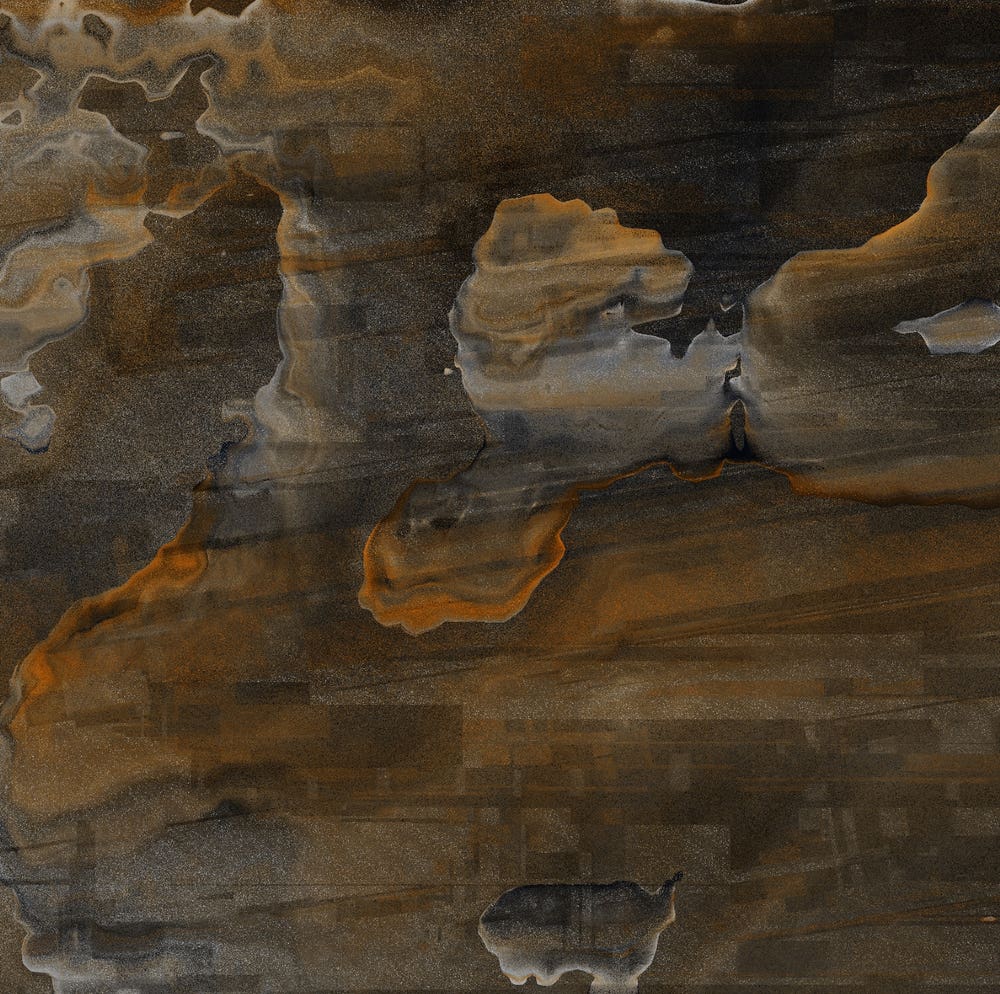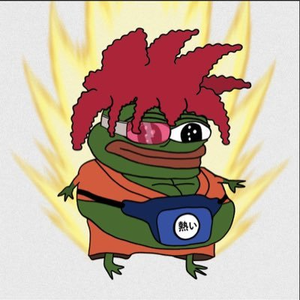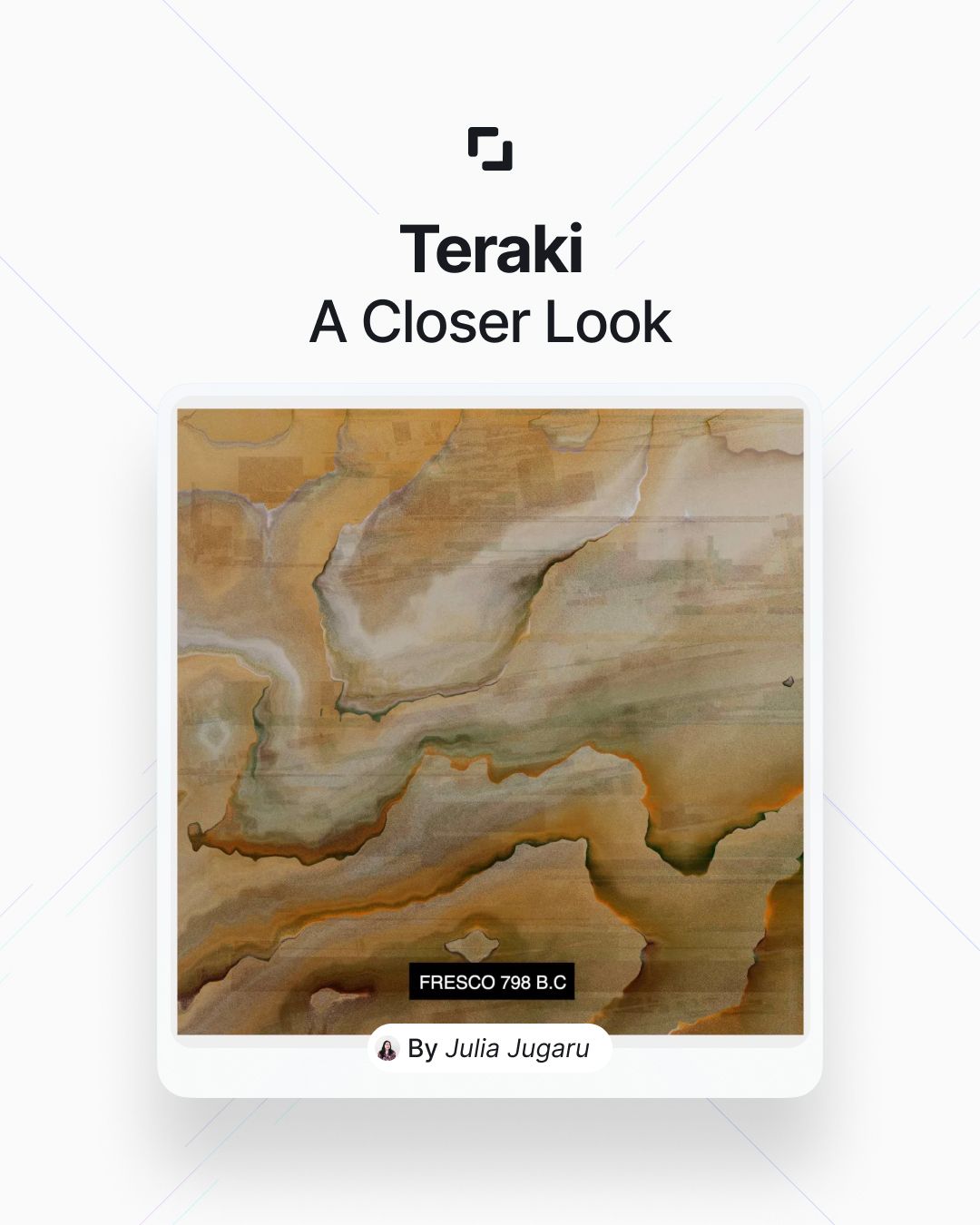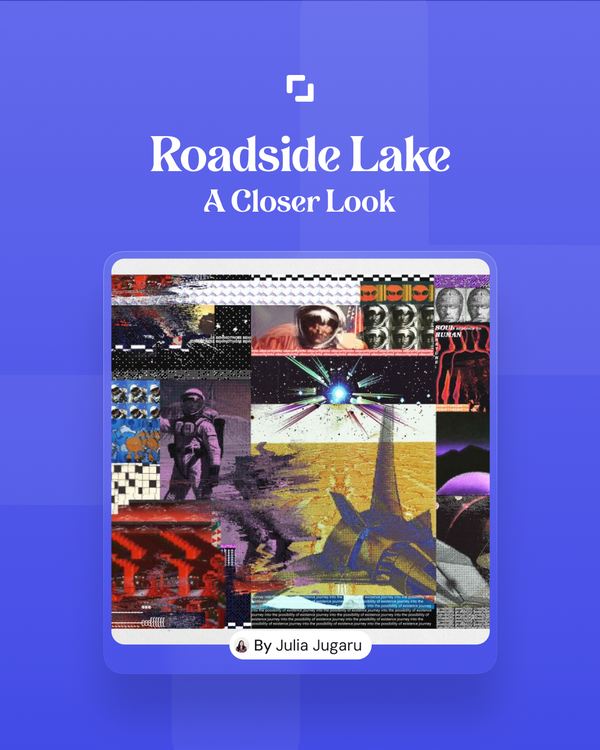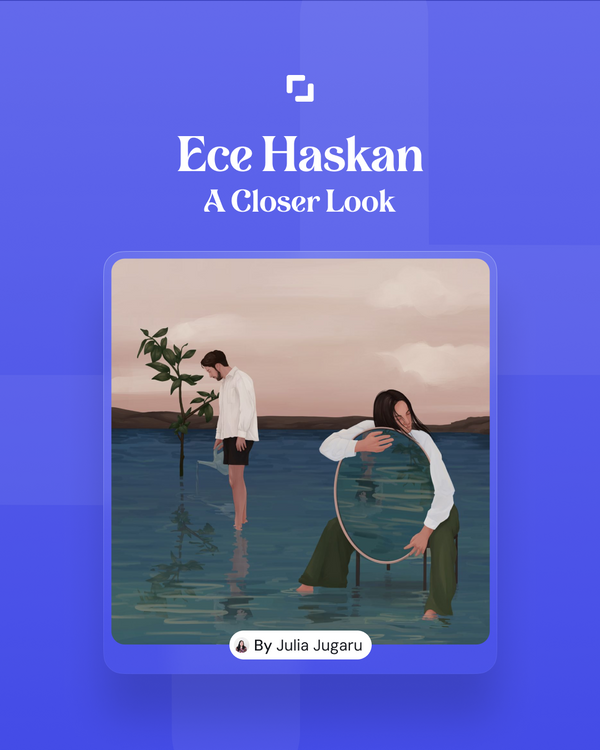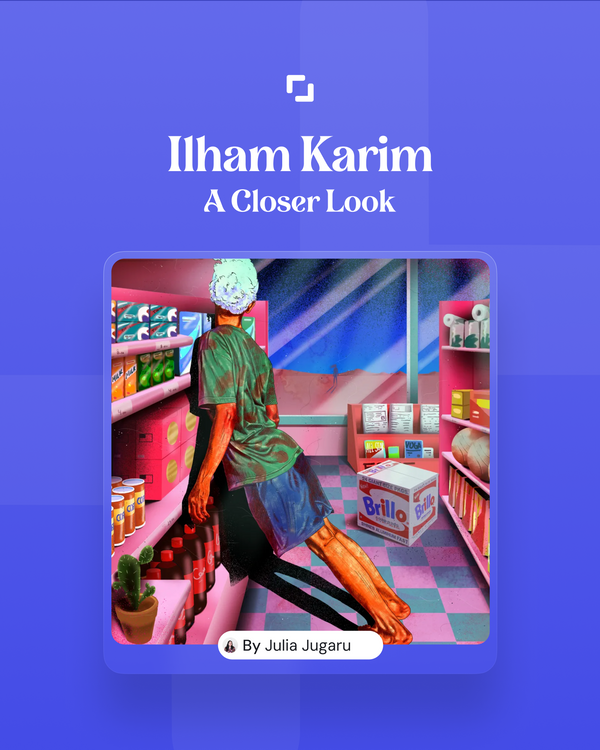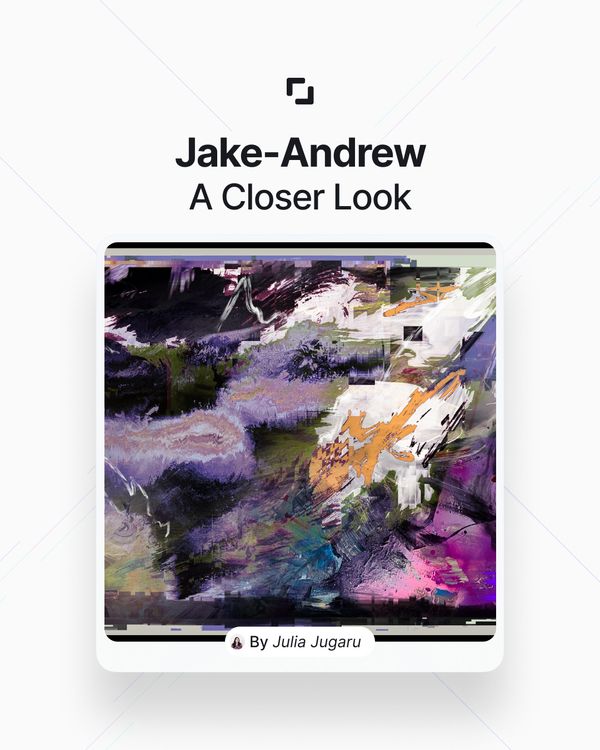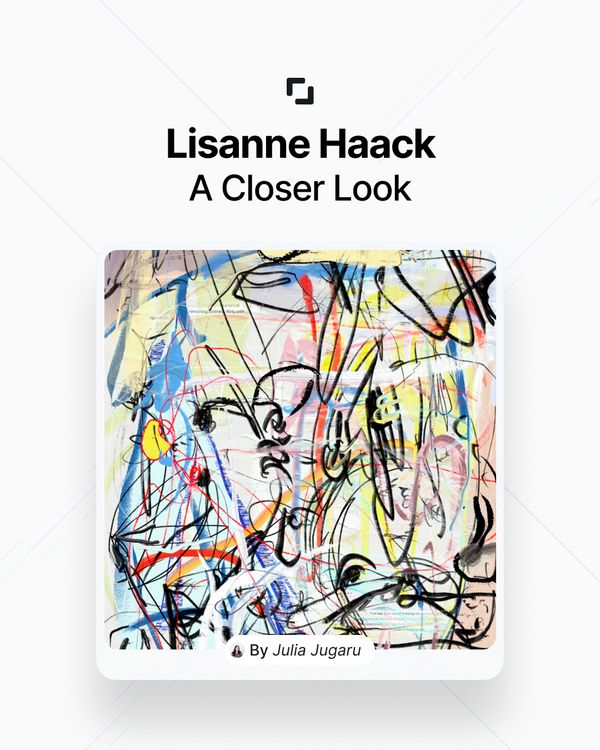Teraki is a true pioneer in the world of generative art, a masterful blend of algorithms and artistic expression. His creative process is driven by an insatiable curiosity, always on the lookout for inspiration in the most unexpected places. From nature walks to technical papers and even their own waking dreams, he find the seeds of ideas that will later blossom into captivating visual experiences.

the beginning of the journey
Q: What initially drew you to your chosen medium or art form, and what keeps you engaged and inspired to continue creating?
While the initial draw to generative art was the promise of emergent complexity, what truly keeps me inspired on an ongoing basis is just how boundless the creative possibilities feel. There are always new frontiers and uncharted directions to explore. Specifically, I find immense inspiration in discovering new ways to evolve and elevate the behaviors, interactions, and visual outcomes from my algorithms. I continually tinker and tweak the parameters seeking that next level of lifelike motion, mesmerizing patterns, or surprising generative expressions. When I unlock a new technique or stumble upon an unexpected result through my experiments, that motivational spark is ignited again. I'm also endlessly inspired by collaborating with other artists, musicians, and technologists to see how generative art can augment their creative practices too. Exploring those uncharted applications and seeing how audiences respond renews my sense of artistic purpose. Most of all, the blank canvas potential of code as a medium keeps me engaged. Knowing that there are infinite possibilities and always more to learn drives me to constantly expand, refine, and diversify my algorithmic art. The journey of discovery never ends, and that perpetual sense of artistic growth is tremendously inspiring.

the inspiration
Q: Can you describe your creative process? How do you generate ideas, and how do you bring them to life in your work?
My process always starts with curiosity - questioning how I can take a particular technique, interaction or behavioral phenomenon and transform it into a visual experience. I actively look for those seeds of inspiration everywhere - in nature walks, technical papers, waking dreams. I jot down sketches and pseudo-code in my notebook to capture any creative sparks. Once an idea takes form, the real hands-on experimentation begins. I start by building a very barebones prototype focused on the core algorithmic logic, stripped of aesthetics. Seeing the mechanics come to life on screen, even in raw form, guides me in refining the parameters and interactions. From there, I iteratively layer on more complexity - introducing new variables and randomizations, blending multiple systems, and tweaking weighting, forces, and ratios to shape the desired behaviors. I often feel I'm "growing" a piece as much as coding it. Eventually, an emergent life begins to take form. Finally, I hone the visual presentation - colors, shapes, flow - to polish the output into a captivating piece. This intuitive refinement based on continuous observation is key. I'm always bouncing between my left-brain programming mode and right-brain creative observation. It's a long iterative co-evolution of coding logic on the backend and emergent aesthetics on the frontend. But when a seamless blend of algorithms and artistic expression comes together, it's incredibly rewarding to witness a new generative creation come to life!

Q: Many artists have a particular theme or message that they explore through their art. What central themes or ideas do you find yourself consistently drawn to, and why?
A key theme I explore is the phenomenon of emergence - how complex, lifelike behaviors can arise from simple algorithmic parts and interactions. I'm fascinated by translating the organized chaos we see in nature into generative art. Mimicking flocking, swirling, branching, cell division, and more from raw math and logic endlessly captivates me. Another core theme is the illusion of perpetual motion and growth. I create self-propagating systems where shapes, particles, and data perpetually multiply and transform to achieve a sense of constant organic expansion over time. I want viewers to feel they're observing a living system in flux rather than static art. At a deeper level, I'm also drawn to themes of the endless creative potential within algorithms. By combining math, code, and data as my artistic palette, I feel there are infinite possibilities waiting to be discovered. My art reflects a belief in generative systems as tools to manifest the boundless beauty within computational creativity. I gravitate towards these motifs because they represent deeper metaphysical ideas about emergent order in the universe. By artistically mimicking emergence and infinite complexity from simple rules, I hope to reflect the wonder, joy, and mystery that underlies all creation in our dynamic world.
finding middle ground
Q: How do you navigate the balance between staying true to your artistic vision and meeting the expectations or demands of the audience or art market?
Staying true to my inner creative spirit is always the driving force. I don't let expectations sway me into artificially altering my style or process. However, I do pay close attention to audience reactions to understand what resonates. For example, when viewers respond strongly to a particular visual theme I've explored, like emergent organic shapes or mesmerizing patterns, it validates and reinforces my core aesthetic vision. I leverage this feedback to refine and elaborate on those compelling motifs in future work. I also aim to strike a balance between accessibility and avant-garde experimentation in my art. Pushing boundaries is crucial for creative growth, but can alienate audiences. So I blend more adventurous algorithmic explorations with accessible pieces that provide an entrypoint to my style. Additionally, I leverage tools like social media to share bite-sized clips and WIPs that invite audiences into my creative headspace. Giving viewers a window into my process humanizes the work and helps them appreciate the method behind the pieces. At the end of the day, staying true to my generative programming craft and the emerging visual language it enables is essential. But tuning into audience perspectives helps me understand how to translate my artistic vision into compelling experiences viewers can relate to. It's an evolving tightrope of inner purpose and outer connection.

Q: Artistic expression can be deeply personal and introspective. How do you handle vulnerability and emotional exposure in your work, and how does it affect you as an artist?
My art arises from algorithms, I infuse it with vulnerability by being open to serendipity and impulse while creating. I don't over plan - I follow the emerging aesthetic energies in the work. When this vulnerability is channeled into the code, it lends the art a palpable sense of life. This process also requires surrendering control. Allowing the art to take on a direction of its own requires trusting the creative unknowns. Sitting with that uncertainty is profoundly vulnerable, yet vital for innovation. It can be emotionally turbulent, but incredibly rewarding when the vulnerability transforms into something beautiful and meaningful. I also pour my perspectives on themes like emergence into the work - a vulnerable act of philosophical exposure. By artistically conveying my awe at principles like complexity from simplicity, I hope to move others with this sense of wonder too. This intimate dance between algorithms and inner vulnerability is often difficult, yet invaluable artistically. It imbues the art with resonance. My goal is then channeling those exposed human truths into generative pieces that can speak to our shared experiences. When my vulnerability translates into something universally uplifting, I know I've struck an artistic chord.
the influence
Q: Are there any artists or art movements that have had a significant influence on your style or approach? How have they inspired and shaped your artistic journey?
I'm profoundly inspired by pioneering generative artists like John Whitney, who used algorithms and analog computing in the 1960s to explore mesmerizing abstract animations. His early vision planted seeds for so much computer art today. I'm also heavily influenced by Op Art and Bridget Riley's work in particular. Her striking explorations of optical illusion through shape, line and color taught me how powerful simple primitives can be when expertly composed algorithmically. Generative digital artists like Raven Kwok and Andrei Lacatusu inspire me in how they leverage code to manifest uniquely digital aesthetics and experiences. Their innovative approaches push the boundaries of what generative art can be. I'm also shaped by processing and computer graphics pioneers like John Maeda, whose balance of technical mastery and creative expression I aim to emulate. And nature writers like Richard Dawkins, whose perspectives on emergent complexity have informed my algorithmic ecosystems. Mostly, I'm driven by the interplay between science and art - using technology to express the poetry within data. Generative artists like myself get to surf these waves between logic and beauty, structure and aesthetic. Standing on the shoulders of so many innovators before me, I hope to carry on this trajectory toward new creative horizons.
work in progress
Q: In the creative process, artists often encounter challenges or roadblocks. Can you share a specific instance where you faced a significant obstacle, and how did you overcome it?
One major obstacle was when I attempted to generate intricate organic patterns using L-systems, but the resulting shapes had a very artificial, platonic feel to them rather than the flowing randomness I wanted. I struggled for weeks trying to inject more lifelike variances. The breakthrough came when I shifted to using simulated pathfinding ants as the generative mechanism. By giving each individual ant simple rules for roaming and depositing pheromone traces, suddenly complex, naturalistic patterns began emerging. The decentralized, localized behavior of swarm intelligence was far better suited than rigid L-systems. However, I faced new challenges getting the pheromone decay rate, nest dynamics, and colony sizes balanced to perpetually sustain these delicate lace-like structures without stabilizing or fading out. It was an immense technical challenge requiring deep optimization. But the end result was overwhelmingly worth it - riveting perpetually shifting ant colony designs. That ant swarm approach wound up becoming core to my generative vocabulary. Pushing through those multifaceted obstacles opened the door to entire bodies of work I couldn't have otherwise dreamed of creating.

Q: Collaboration can be a powerful force in art. Have you ever collaborated with other artists or professionals from different disciplines? If so, what was the experience like, and how did it impact your work?
I don't have direct experience yet, I'm convinced that bringing multiple lenses to my generative art can reveal new directions and open doors in my work. Collaborating across disciplines resonates with the core ethos of emergence underpinning my style. I'm excited by the complex creative potentials waiting to be unlocked through future collaborations.
the experience with Exchange Art
Q: Could you describe how your involvement with Exchange Art, has impacted your life as an artist?
While I haven't directly benefited from the Exchange Art community yet, I'm thrilled by its mission of connecting generative artists and providing resources to nurture our craft. I believe an engaged, supportive community is invaluable for growth. In particular, I look forward to learning from other experienced generative artists on techniques, concepts and perspectives to expand my skills. Having a forum to exchange knowledge with likeminded creatives is sure to accelerate my artistic development. I also anticipate Exchange Art being a motivating force by providing a platform for sharing my new generative pieces and getting constructive feedback. Validating that my work resonates with others will inspire me to keep creating. Most importantly, I believe surrounding myself with brilliant artistic minds united by a passion for generative art will spark new ideas and opportunities for my practice. Collaborations, commissions, technical breakthroughs and more can emerge from such a fertile community. While I'm just getting started, I'm confident Exchange Art will fast become an integral part of my artistic life. The personal connections, resources and inspiration it fosters will profoundly shape my evolution as a generative artist. I look forward to all the growth ahead!

thoughts to the future
Q: Looking ahead, what are your aspirations and goals as an artist? How do you envision your artistic practice evolving in the future?
In the near term, I aim to expand my generative repertoire with techniques like neural networks, computer vision, and physics engines. Mastering these will allow me to make major leaps in emergent complexity. I also hope to experiment with projection mapping, AR, and other new mediums. Further out, I aspire to large-scale public installations that immerse viewers in evolving generative worlds. I imagine works blending architecture, sound and interactivity to activate physical spaces in living ways. I want to bring my art to communal environments where it can positively impact people's lives. Ultimately, I envision establishing a studio practice where I can mentor other artists on creative coding and collaborate with diverse talents to pioneer new intersections of algorithms and creativity. My goal is cultivating a community of innovation that pushes generative art to its fullest potential as a new artistic frontier. On a philosophical level, I hope my art continues channeling themes of emergence while speaking to our shared human experience. By artistically celebrating principles of complexity, consciousness and life, I believe generative art can be a profoundly humanistic medium. That motivates me to constantly evolve as an artist. I'm committed to a lifelong journey of learning and discovery with code as my bridge between logic and beauty. There is so much creative potential still untapped, and that limitless possibility ahead is tremendously exciting.
explore more artworks :
